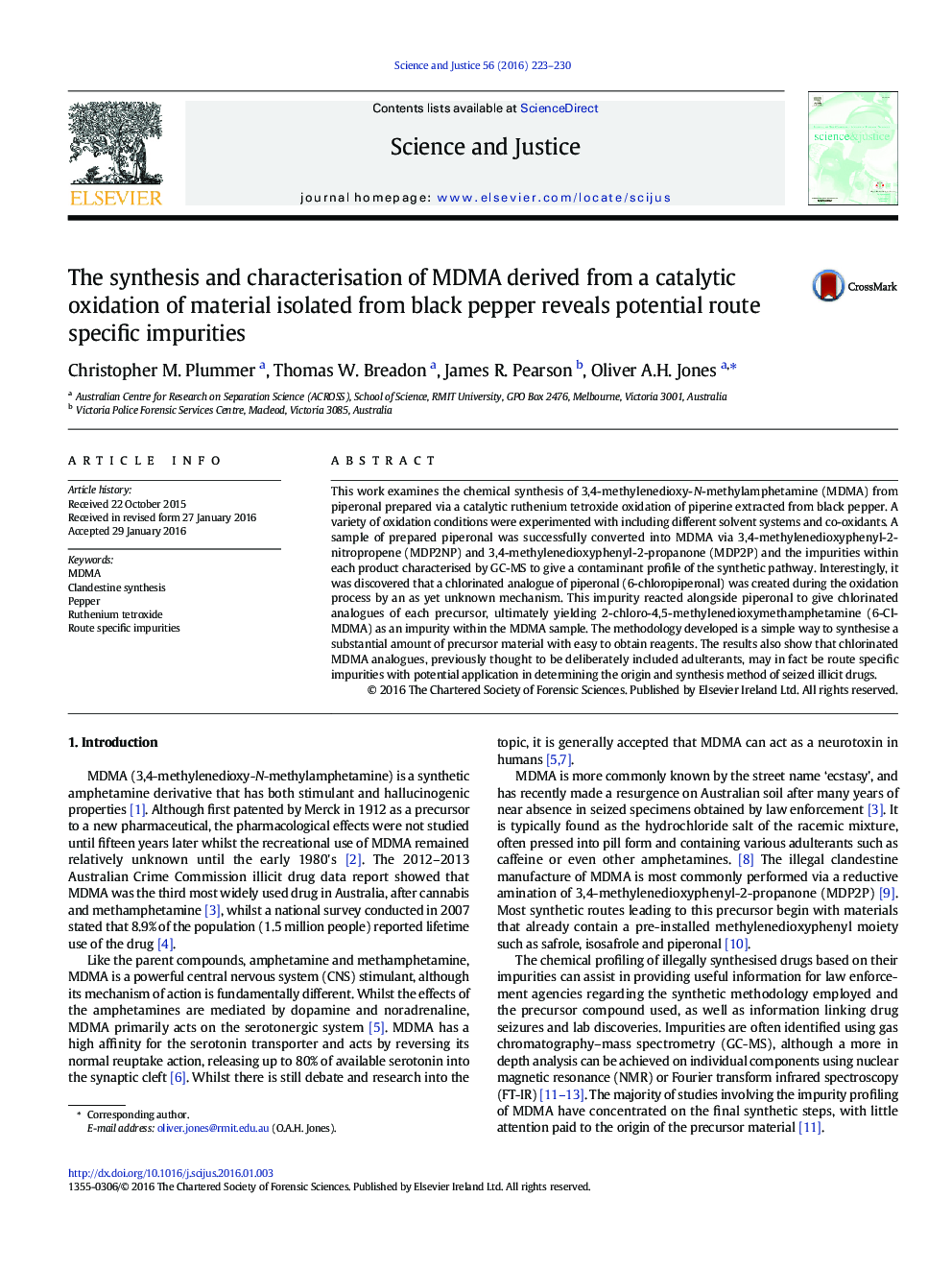| Article ID | Journal | Published Year | Pages | File Type |
|---|---|---|---|---|
| 106874 | Science & Justice | 2016 | 8 Pages |
•The synthesis of an MDMA precursor via piperine from black pepper was undertaken.•A variety of oxidation conditions, solvent systems and co-oxidants were tested.•Conversion of the precursor to MDMA using household chemicals was carried out.•Chlorinated analogues of MDMA and all precursor compounds were identified.•Route specific impurities may be of use in determining the origin of seized drugs.
This work examines the chemical synthesis of 3,4-methylenedioxy-N-methylamphetamine (MDMA) from piperonal prepared via a catalytic ruthenium tetroxide oxidation of piperine extracted from black pepper. A variety of oxidation conditions were experimented with including different solvent systems and co-oxidants. A sample of prepared piperonal was successfully converted into MDMA via 3,4-methylenedioxyphenyl-2-nitropropene (MDP2NP) and 3,4-methylenedioxyphenyl-2-propanone (MDP2P) and the impurities within each product characterised by GC-MS to give a contaminant profile of the synthetic pathway. Interestingly, it was discovered that a chlorinated analogue of piperonal (6-chloropiperonal) was created during the oxidation process by an as yet unknown mechanism. This impurity reacted alongside piperonal to give chlorinated analogues of each precursor, ultimately yielding 2-chloro-4,5-methylenedioxymethamphetamine (6-Cl-MDMA) as an impurity within the MDMA sample. The methodology developed is a simple way to synthesise a substantial amount of precursor material with easy to obtain reagents. The results also show that chlorinated MDMA analogues, previously thought to be deliberately included adulterants, may in fact be route specific impurities with potential application in determining the origin and synthesis method of seized illicit drugs.
